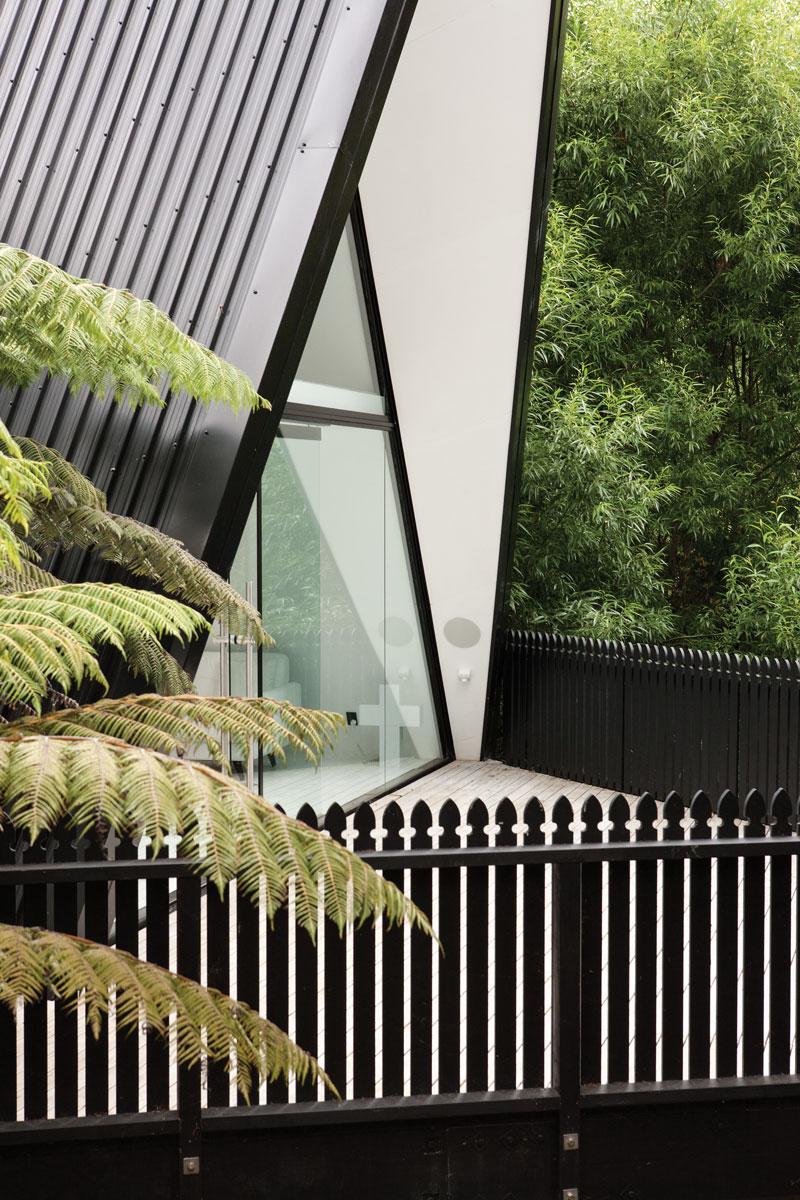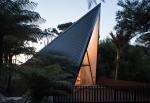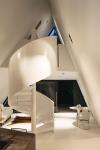Tate Modern in New Zealand

Tate Modern
in New Zealand
At the turn of the century, a young Aucklander named Chris Tate was developing a passion for art, buildings and spaces, and for using unconventional materials to create unexpected relationships that surprised – and, sometimes, shocked. His penchant, then and now, for jet-black buildings with pure white interiors has become synonymous with his design style: creating soft, gentle interiors nestled within uninvitingly tough exteriors.
At around the same time, London’s Tate Gallery was being transformed into a current-day ‘federation’ of art museums. The refurbished National Gallery of British Art was renamed Tate Britain and the Tate’s collection of British and international modern and contemporary art from 1900 to the present day was moved downstream to the new Tate Modern.
Inspired by German architect Joseph Beuys (d. 1986) who believed architecture should be a ‘gesamtkunstwerk’ – a total work of art – Swiss architects Herzog & de Meuron were tasked with designing this new building on the site of the disused Thames-side power station at Bankside. Rather than demolishing it, they chose to phoenix that building, juxtapositing 4.2 million bricks and groups of thin vertical windows to create a dramatic light inside while externally maintaining the look of a 20th century factory.
This was precisely the sort of unexpected relationship that so attracts Chris Tate.
With confidence in his own design principles, and unaware that they mirrored those of the great Beuys, Chris built his first house – for himself. Then he project-managed a major Richard Priest house construction, learning techniques and disciplines from Richard who encouraged Chris to develop his passion for architecture and art. Chris took a two-year draughting course, qualified, continued to design houses and, following widespread recognition of his black-and-white glass house set in the Waitakere bush, launched his architectural career, Chris Tate Architecture. Over the years that followed Chris has designed buildings that speak foremostly of his art focus. For him, functionality comes second.
His most recent project, on Waiheke, is his pad, a place to work, a shelter. Now affectionately known as ‘The Tent’, it resembles a giant cicada, hunched and ready to spring, although as buildings go, its footprint is small. Chris built it for himself so there was no pressure. “It simmered for five years in the design phase, took two to build and another one to do the finishing,” he says.
While each project ‘simmers’ Chris keeps to the forefront the question: how is it going to look when it’s finished? An essential point of design is the way the house is set into the landscape and, through the eyes of an artist, he considers this, along with the weather, competing elements, privacy and how it will relate to neighbours and to the environment. He also visualises the interior, the fittings and the furniture. He goes back repeatedly to his check list. “The conceptual process is simple but it’s easy to go off track.”
The Tent looks simple too, which is how Chris wanted it: stark; uninviting, even. Clad in an elegantly fine-ribbed Metalcraft Metrib roofing profile in black COLORSTEEL®, it squats low at the back, widening to thrust seven metres high at the front.
The build itself was challenging. Chris describes it as ‘like a large sail under windload, requiring a lot of supporting structure’. He sees it as ‘a sculpture rather than a house’; ‘a 75m² prism with internally-inclined walls’; a personal project – and a lot of fun.
The complexities of this all-steel structure are cunningly hidden inside the stunningly white walls which, unencumbered, present a perfectly smooth, clean look and feel, complementing the minimalist interior and rendering it soft and beautiful, yet seemingly invisible. Even the internal staircase seems to float. There’s no distraction: no artwork, no TV, no recesses, no wardrobes or storage nooks.
The building required steel purlins every 200mm and a steel spine supporting the two huge steel segments that served as both roof and walls. No two angles were the same, so maximising floor space and calculating wall pitch and head heights were challenging. With on-site engineering input from Team Builders 2000 craftsmen, Chris crafted his own steel materials to exact structural specifications.
That’s why he uses only steel framing. “It allows flexibility of design. It’s 100% reliable. It’s stable. There’s no variation. It’s unaffected by weather.” Chris especially likes being able to hide structure within the framing. “In this way I can create pockets, places to conceal the structure without it impacting on the interior.” And as for price: “It’s a cost-effective material, lightweight and easy to handle and so, less demanding of the builders and I can make my own customised pieces on site.”
Over a dozen buildings now carry the distinctively Chris Tate trademark and his gallery of photos (www.christate.co.nz/projects) is further evidence that here in New Zealand we have our own Tate Modern.


